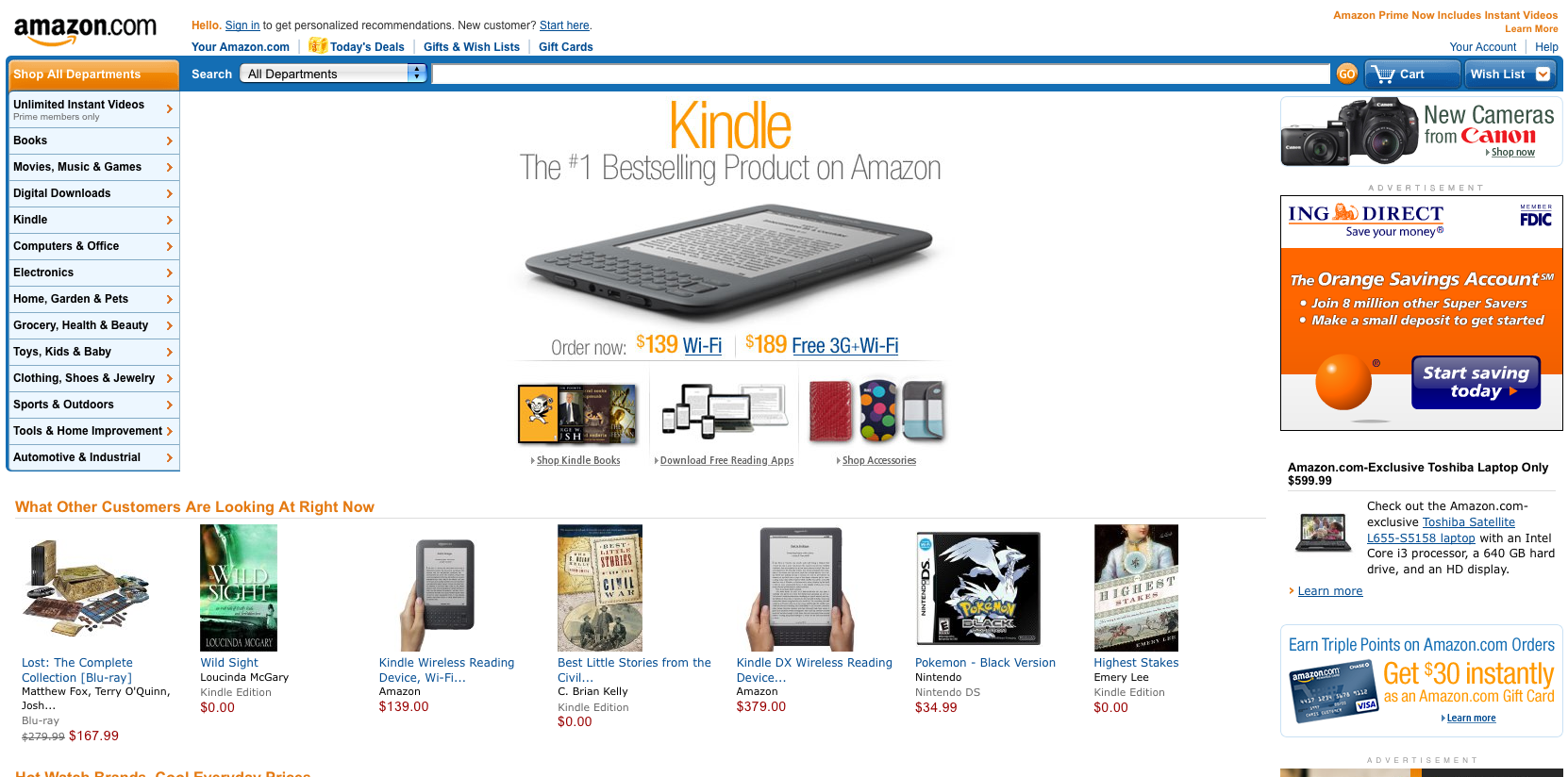On Feb 22nd, 2011, Best Buy stopped retails sales at all branded stores in China (http://bestbuy.com.cn/). All of a sudden. Astonishing. I have been to Best Buy retails stores here in United States, and sometimes they were even crowded. Although people in US are more used to shop on-line, this kind of retail stores are full of customers, too. Chinese people are more likely to shop in-store. But why it just failed in China?
Well, there were already a lot of discussions and thoughts on this topic, here and there. Flaws in “operating strategy” and “localization” when it came to China were mentioned all the time. I agree these are the key points in this case, and many other cases. Well, Groupon just entered Chinese market, and let’s see its performances.
Therefore, I would like to do a localization in US & China series from a web perspective, to analyze localization of some international company websites in US & China. I think this could somewhat give us an understanding about their strategies used behind the scenes.
Kick-Off: Amazon (US) & Joyo Amazon (China)
I am crazy about books, and these are two websites where I regularly throw money. They’re really just the same company, headquarter in US and a branch in China, and very popular in both places. Sometimes it is normal that a company would re-design its website when it has a market in another country (e.g Yahoo US/ China/ Japan), but for e-commerce websites, like Amazon, the idea of how to attract local customers is obviously more important than its look.
So from first glance, US, Chinese, even Japanese Amazon appear the same as Below.
 Amazon in United States
Amazon in United States
 Joyo Amazon in China
Joyo Amazon in China
 Amazon in Japan
Amazon in Japan
The three websites have similar structure, however, further observation would bring us differences in featured products, even customer concerns.
1. Featured Image: US version has a large Kindle as a featured image, which is also in the group “What Other Customers Are Looking Right Now” below; while in Chinese version there is none. Kindle has not entered Chinese market yet. As far as I know, there are a lot of similar e-book readers like “智器”, “汉王电纸书” on market now, but there is no similar group that we could get any information that how many visitors are interested in them. So far, in United States, e-book sales for Kindle already exceeded paper ones, while paper books seem still to be Chinese’s favorite. We’ll see whether Kindle’s coming will give Chinese book market a big hit.
 Book Promotion Page under Books (Joyo Amazon – China)
Book Promotion Page under Books (Joyo Amazon – China)
2. Categories: For the first-level categories, US and Chinese versions vary a lot, as the pictures shown below:


Departments (US – Left, China – Right)
Other than the same departments they have in common, US version has following ones:
- Unlimited Instant Videos
- Digital Downloads
- Kindle
- Garden & Pets
- Tools & Home Improvements
- Automotive & Industrial
Chinese version has the following:
- Cell phones, electric appliances and automotive are merged
- Clocks & Jewelry
From the above picture & list we know that:
- books are still the 1st merchandise that Amazons want to sell to both US & Chinese customer. In US, digitized books & audiobooks are also provided to customers, while in China not. From my perspective, this happens either because China has huge amounts of free sharing & downloading platforms, and thus customers would not want to pay to download; or Amazon China lacks technical support for this area. If the former reason is true, then Amazon may be able to make it great sales in the upcoming Kindles, but not in e-books or audiobooks.
- Tools are popular in US, but not in China. It is common that American people buy non-assembled desks at Office Depot, and do DIY; while most Chinese people would like to “save trouble” by getting an assembled one. Also, Chinese families usually don’t have gardens either, so they seldom use garden tools. Therefore, it is quite reasonable to ignore corresponding categories in Chinese version.
Categorization for E-commerce websites is usually a trouble, especially as large as Amazon. I noticed two somewhat weird categories in Chinese version: Cell phones, electric appliances & automotive, and Clocks & Jewelry. Is it because cell phones & automotive are both “mobile”? What is relationship between clocks & jewelry? As website users, we are consistently searching for our targets, or at least meaningful ways to reach our targets. I think that’s where we should pay much more attention to usability to.
3. Services: Amazon US has a “Today’s Deals” functionality, while not in Chinese version. Is it function not desired in China:D ? I think this part needs a lot of technical support, and that’s maybe why China does not have the function yet.
 Amazon US: Today’s Deals
Amazon US: Today’s Deals
Overall, Amazon US version is more functional and thoughtful. However, I think it does a great job at Chinese Market. Joyo Amazon is my No.2 in on-line shopping for books in China (Dangdang is the No.1), and Amazon.com is my No.1 choice in United States.
As a user, I especially love the Reviews, and I am used to check them before I buy anything. What about you?
Thank you Aki, I am learning a lot recently and I enjoy it so much. I will post more thoughts on web design soon:) I checked out your blog, awesome, fight on!!